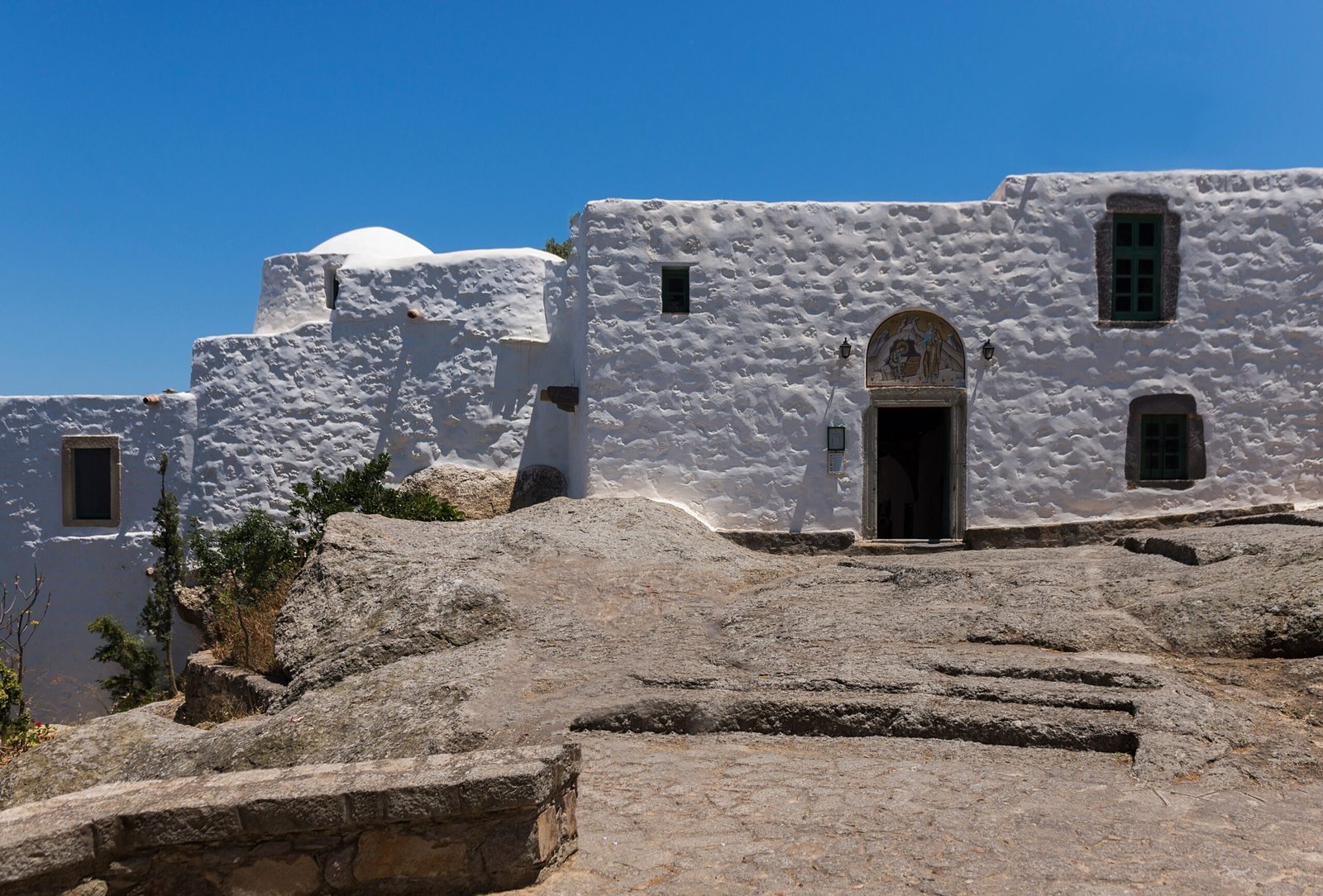The Cave of the Apocalypse is one of the most sacred places on Patmos. It lies between Skala and Chora, halfway up the hill. Visitors often stop here before continuing to the Monastery of Saint John the Theologian. The location is easy to reach by car, taxi, or on foot for those who enjoy walking.
According to tradition, Saint John the Theologian received divine visions inside this cave in 95 AD. These visions later became the Book of Revelation, the final book of the New Testament. Because of this, the cave holds great religious importance.
Today, a small monastic complex surrounds the cave. First, visitors pass through the chapel of Saint Anna. Then, they enter the cave itself. Rough stone walls and low ceilings create a quiet, peaceful atmosphere. A crack in the rock, which tradition says opened when God spoke, remains clearly visible. A niche in the wall marks the spot where John laid his head to rest.
The site is part of the UNESCO World Heritage listing that includes the Monastery of Saint John and Chora. As such, it receives careful preservation. The structure around the cave blends with the natural rock, respecting its ancient character. Signs in Greek and English explain the history and religious significance.
Modest clothing is required. Men should wear long trousers, and women should wear dresses or skirts that cover the knees. Photography is limited, especially inside the cave, to maintain a respectful environment.
The best time to visit the Cave of the Apocalypse is early in the morning or late in the afternoon. These times offer cooler temperatures and fewer crowds. During religious festivals, the site may become busy, especially around Easter and Saint John’s feast days.



Comment (0)